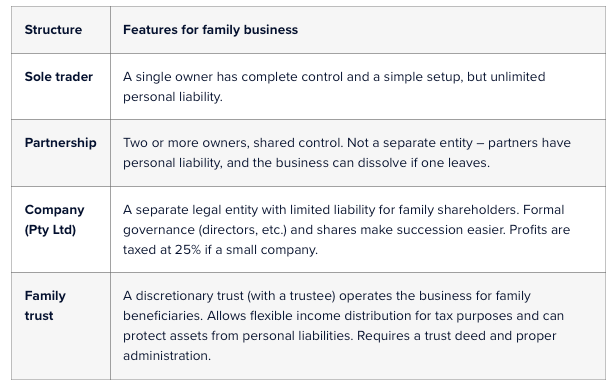2020 Economic Stimulus Package
Ian Campbell • 23 March 2020
ECONOMIC STIMULUS PACKAGE (COVID-19)
On 12.3.2020, the Federal Government announced a $17.6 billion economic plan to keep Australians in jobs, keep businesses in business and support households and the Australian economy as the world deals with the significant challenges posed by the spread of the coronavirus.
The targeted stimulus package is focused on keeping Australians in jobs and helping small and medium sized businesses to stay in business.
The package has four parts:
Supporting business investment
Providing cash flow assistance to help small and medium sized business to stay in business and keep their employees in jobs
Targeted support for the most severely affected sectors, regions and communities;
Household stimulus payments that will benefit the wider economy
According to Prime Minister Scott Morrison the measures are all temporary, targeted and proportionate to the challenge we face.
The actions will ensure we respond to the immediate challenges we face and help Australia bounce back stronger on the other side, without undermining the structural integrity of the Budget.
As part of the plan up to 6.5 million individuals and 3.5 million businesses would be directly supported by the package.
Delivering support for business investment
$700 million to increase the instant asset write off threshold from $30,000 to $150,000 and expand access to include businesses with aggregated annual turnover of less than $500 million (up from $50 million) until 30 June 2020. For example, assets that may be able to be immediately written off are a concrete tank for a builder, a tractor for a farming business, and a truck for a delivery business.
$3.2 billion to back business investment by providing a time limited 15 month investment incentive (through to 30 June 2021) to support business investment and economic growth over the short term, by accelerating depreciation deductions. Businesses with a turnover of less than $500 million will be able to deduct an additional 50 per cent of the asset cost in the year of purchase.
These measures commenced on 12.3.2020 and will support over 3.5 million businesses (over 99 per cent of businesses) employing more than 9.7 million employees or 3 in every 4 workers. The measures are designed to support business sticking with investment they had planned, and encouraging them to bring investment forward to support economic growth over the short term.
Cash flow assistance for businesses
$6.7 billion to Boost Cash Flow for Employers by up to $25,000 with a minimum payment of $2,000 for eligible small and medium-sized businesses. The payment will provide cash flow support to businesses with a turnover of less than $50 million that employ staff, between 1 January 2020 and 30 June 2020. The payment will be tax free. This measure will benefit around 690,000 businesses employing around 7.8 million people. Businesses will receive a credit of 50% of the tax withheld in their activity statement from 28 April with refunds to be paid within 14 days.
$1.3 billion to support small businesses to support the jobs of around 120,000 apprentices and trainees. Eligible employers can apply for a wage subsidy of 50 per cent of the apprentice’s or trainee’s wage for up to 9 months from 1 January 2020 to 30 September 2020. Where a small business is not able to retain an apprentice, the subsidy will be available to a new employer that employs that apprentice.
Stimulus payments to households to support growth
$4.8 billion to provide a one-off $750 stimulus payment to pensioners, social security, veteran and other income support recipients and eligible concession card holders. Around half of those that will benefit are pensioners. The payment will be tax free and will not count as income for Social Security, Farm Household Allowance and Veteran payments. There will be one payment per eligible recipient. If a person qualifies for the one off payment in multiple ways, they will only receive one payment.
Payments will be from 31 March 2020 on a progressive basis, with over 90 per cent of payments expected to be made by mid-April.
Assistance for severely-affected regions
$1 billion to support those sectors, regions and communities that have been disproportionately affected by the economic impacts of the Coronavirus, including those heavily reliant on industries such as tourism, agriculture and education. This will include the waiver of fees and charges for tourism businesses that operate in the Great Barrier Reef Marine Park and Commonwealth National Parks. It will also include additional assistance to help businesses identify alternative export markets or supply chains. Targeted measures will also be developed to further promote domestic tourism. Further plans and measures to support recovery will be designed and delivered in partnership with the affected industries and communities.
The Government is also offering administrative relief for certain tax obligations, including deferring tax payments up to four months. This is similar to relief provided following the bushfires for taxpayers affected by the coronavirus, on a case-by-case basis. The ATO will set up a temporary shop front in Cairns within the next few weeks with dedicated staff specialising in assisting small business. In addition, the ATO will consider ways to enhance its presence in other significantly affected regions to make it easier for people to apply for relief, including considering further temporary shop fronts and face-to-face options.
The Government maintains its economic support package is proportionate, timely and scalable to respond to the economic challenges presented by the spread of the coronavirus.

